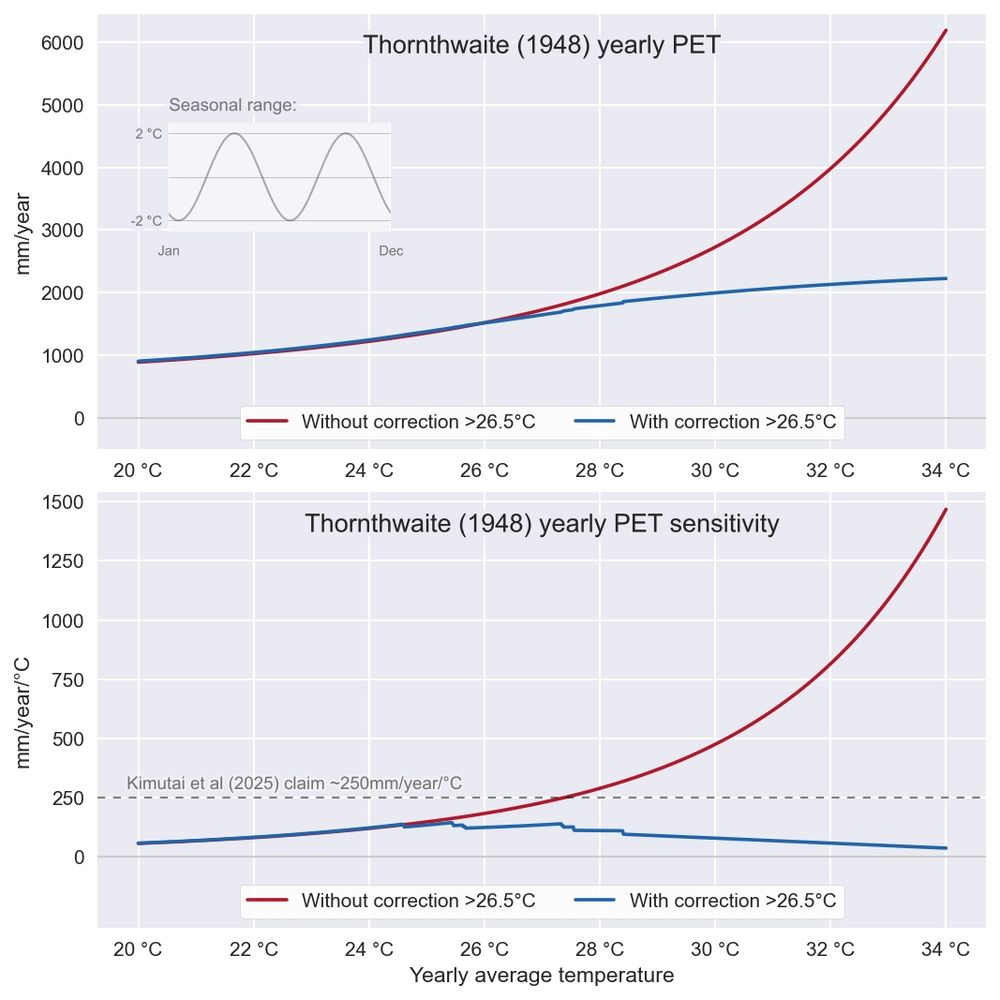rcei.rutgers.edu/climate-expe...

rcei.rutgers.edu/climate-expe...


With my fix the pr-ratio drops to around ~400x.
Their Fig 6a:
With my fix the pr-ratio drops to around ~400x.
Their Fig 6a:


Clipping latitude >-50° & <50° as Thornthwaite prescribes isn't relevant here.

Clipping latitude >-50° & <50° as Thornthwaite prescribes isn't relevant here.



That won't change the result much, perhaps an honest mistake.


That won't change the result much, perhaps an honest mistake.
The more obvious explanation is of course this error. 🤦♂️

The more obvious explanation is of course this error. 🤦♂️

The amount of txt-based numbers/dates within climate science is wild, formats like parquet/arrow have been around for a while.

The amount of txt-based numbers/dates within climate science is wild, formats like parquet/arrow have been around for a while.
Here's the publication:
doi.org/10.1016/j.wa...

Here's the publication:
doi.org/10.1016/j.wa...
Jensen et al (1990):

Jensen et al (1990):



To use such language and accusations only to then proceed to do the same yourself is such a bad look. What's the point of dragging climate science into such a tribal state?

To use such language and accusations only to then proceed to do the same yourself is such a bad look. What's the point of dragging climate science into such a tribal state?



And he was clear about how to handle temperatures above 26.5°C, that's not optional. Without it the sensitivity explodes....


And he was clear about how to handle temperatures above 26.5°C, that's not optional. Without it the sensitivity explodes....

